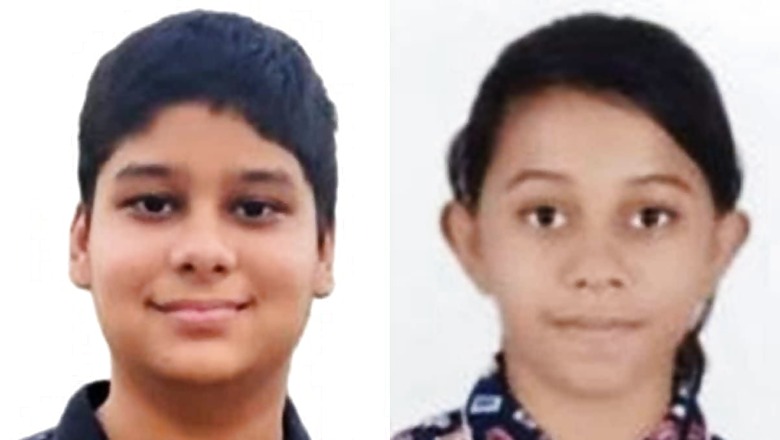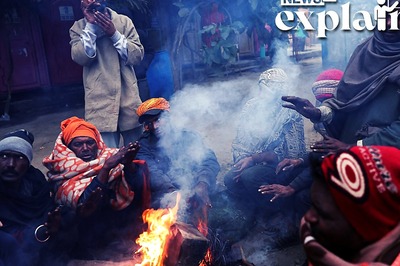
views
Delhi zone’s Ved Lahoti bagged the first rank in the JEE (Advanced), the results of which were declared on Sunday. Bombay zone’s Dwija D Patel became the female topper with an all-India rank of 7.
Ved secured 355 out of 360 marks while Dwija scored 332. Two out of the top 10 are from the Delhi zone, four are from Madras zone, three from Bombay and one from Roorkee. Unlike last year, when six out of the first 10 toppers were from the Hyderabad zone, candidates from this zone could not make the top 10 this time.
A total of 1,80,200 candidates appeared in both papers in the Joint Entrance Examination (Advanced), of which 48,248 have qualified including 7,964 female candidates.
A total of 29,639 candidates from the scheduled castes appeared for the test, of which 13,835 qualified. A total of 13,935 candidates from the scheduled tribes wrote the papers, of which only 5,087 qualified. Besides, a total of 158 foreign candidates took the test, of which only seven have qualified, as per the results announced by IIT-Madras that was the organising chair this year.
Other toppers including Aditya from the Delhi zone, who secured AIR 2, scored 346 marks. Bhogal Palli Sandesh with 338 marks from the Madras zone bagged AIR 3, followed by Rhythm Kedia (337 marks) from Roorkee at AIR 4 and Putti Kushal Kumar (334 marks) from Madras at rank 5.
The sixth and seventh positions were bagged by Rajdeep Mishra (333 marks) and Dwija (332 marks) – both from the Bombay zone – with Koduru Tejeswar (331 marks) from Madras ranked eighth, Dhruvin H Doshi (329 marks) from Bombay in the ninth position and Alladaboina SSDB Sidhvik Suhas (329 marks) from Madras with AIR 10.
Who are the toppers?
Dwija based out of Gujarat’s Rajkot is the only female candidate featuring in the top 10. She was also the only girl to top the JEE (Main) with a 99.99 percentile. Back in February, when the Main results were announced, she had said she wanted to opt for computer science engineering at IIT-Bombay.
“We knew she will make it to the top 50, but that she has achieved rank 7 was unexpected. We are thrilled with her result. She will be the first engineer in the family, while the rest of us have been more inclined towards science. She wants to get admission in IIT-Bombay to study computer science; mathematics has always been her favourite subject,” Dwija’s mother Kiran Patel told News18 over the phone.
The criteria for being in the rank list is based on the maximum aggregate calculated as a sum of the marks obtained in mathematics, physics and chemistry. Candidates have to satisfy subject-wise as well as the aggregate qualifying marks to be included in a rank list. The maximum aggregate marks are 360 (180 each in Paper 1 and Paper 2).
The process for Joint Seat Allocation (JoSSA) will start from June 10 for admissions to the 23 IITs across India. This is based on the results of the JEE (Advanced). Seven IITs organise this exam every year in rotation.
The JoSAA is a joint counselling session for admission to IITs, NITs, IIITs and other government-funded engineering colleges in India. While for admission to the IITs only the JEE (Advanced) scores are considered, for admissions to NITs, IIITs and other government-funded institutions, JEE (Main) rank is the criteria. If a candidate qualifies for both Main and Advanced, they can fill all the choices of institutes and, depending on the course or discipline for which their rank is admissible, they will be given admission.
Stay ahead with all the exam results updates on News18 Website.




















Comments
0 comment